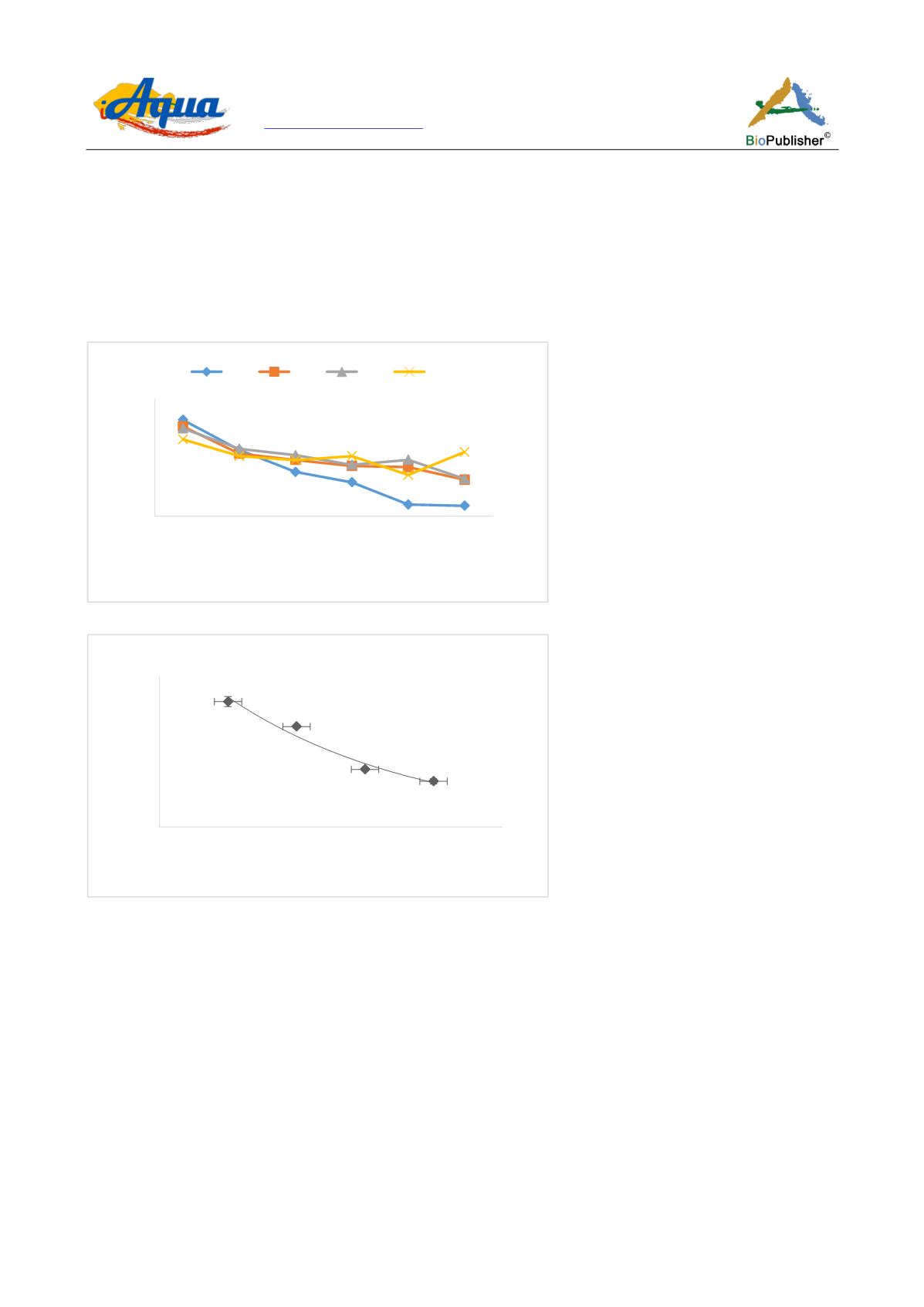
International Journal of Aquaculture, 2018, Vol.8, No.18, 137-144
140
Specific Growth Rate (SGR), Survival Rate and Food Conversion Rate (FCR) were significantly affected (
p
˂0.05)
by stocking densities of
H. occipitalis
tadpoles. Tadpoles reared in high density (10 to 20 larvae/L) showed a low
specific growth rate (1.960 ± 0.326 to 3.683 ± 0.561%/d) (Figure 1). In return, those reared at 5 tadpoles/L
showed a high specific growth rate (4.220 ±0.255%/d) (Table 3). Survival rate of
H. occipitalis
tadpoles varied
between 30.388 ± 1.734% (D
4
) and 86.333 ± 3.333% (D
1
). Moreover, tadpoles were significantly (
p
˂0.05)
affected by the different stocking densities. Concerning the food conversion rate, there was no significant
difference between D
3
and D
4
. Nevertheless, there was a significant difference (
p
˂0.05) among mean values of D
1
and D
2
, D
3
, D
4
(Figure 2).
Figure 1 Specific growth rate of
Hoplobatrachus occipitalis
tadpoles reared at four (04) stocking densities in ponds for 24 days
Figure 2 Relationship between stocking density and survival rate of
H. occipitalis
tadpoles reared in ponds for 24 days
3 Discussion
During the experiment, mean value of temperature (26.57°C) was situated in the favorable limit recommended by
Petersen and Gleeson (2011) for tadpoles rearing (15 to 35°C). Mean values of pH and dissolved oxygen recorded
during this experiment were similar to those recorded in prior studies (Flores-Nava and Vera-Muñoz, 1999) in
Rana catesbeiana
Shaw (1802) tadpoles. Besides, lowest values of pH and dissolved oxygen were obtained in
ponds with high tadpoles stocking densities (D
3
and D
4
). These low dissolved oxygen rates may result from high
oxygen consumption by tadpoles (Browne et al., 2003). Mean values of total ammoniac and nitrites were similar
to those recorded by Flores-Nava and Vera-Muñoz (1999) and Munguia-Fragozo et al. (2015). Concerning nitrates,
mean values were similar to those obtained by Munguia-Fragozo et al. (2015). These results could be explained
not only by remain feed and tadpoles feces that degrade in the rearing media but also the ammoniac produced
these remain feed and feces. Ammoniac is a highly toxic element that may be the reason of mortality observed in
high densities media. It’s important to notice that nitrates (NO
3
-
) are less toxic than ammoniac and nitrites
(Aquarioplus, 2018).
0
1
2
3
4
5
6
7
4
8
1 2
1 6
2 0
2 4
TCS (%)
Période d'élevage (jours)
D1
D2
D3
D4
y = 123.53e
-0.072x
R²= 0.9675
0
20
40
60
80
100
0
5
1 0
1 5
2 0
2 5
Survival rate (%)
Stocking densities (tadpoles/L)
Sur v i v a l r a t e a t d i f f e r en t dens i t i e s (%)


